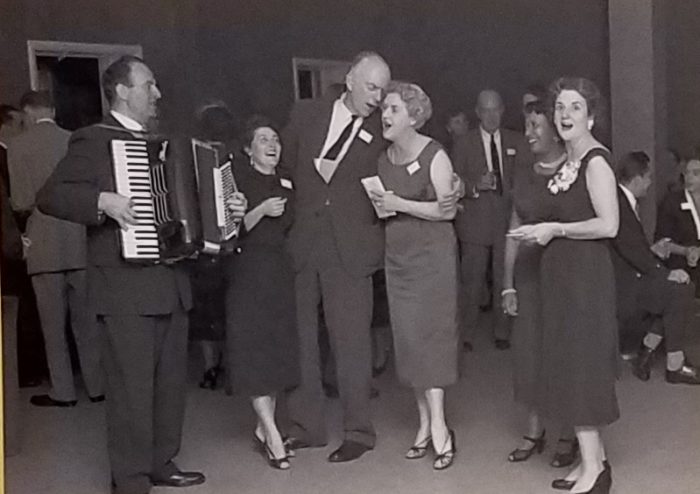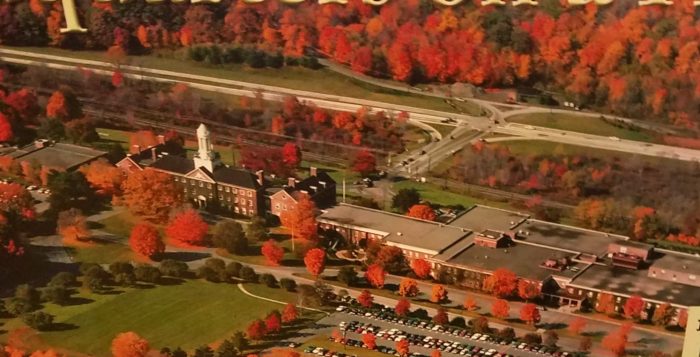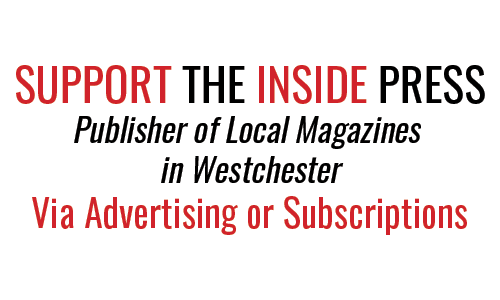 2019 marks the 80th anniversary of the Reader’s Digest headquarters in Chappaqua. Lila Bell Acheson Wallace and her husband, Dewitt Wallace were co-founders, co-editors and true partners in their powerhouse media business enterprises for generations, which included the enormously successful magazine, condensed books, direct mail-order books, trade/retail books, children’s books, music and international editions.
2019 marks the 80th anniversary of the Reader’s Digest headquarters in Chappaqua. Lila Bell Acheson Wallace and her husband, Dewitt Wallace were co-founders, co-editors and true partners in their powerhouse media business enterprises for generations, which included the enormously successful magazine, condensed books, direct mail-order books, trade/retail books, children’s books, music and international editions.
They started Reader’s Digest in 1922 with borrowed money and no subscriptions. Within a year of the Digest’s launch from their apartment in Greenwich Village, the Wallaces moved the company office to a garage in Pleasantville but quickly spread to 14 different overflowing offices throughout the village as circulation surpassed one million by 1935. In the late 1930s, they acquired 80 rolling acres of woodlands in Chappaqua to establish the headquarters’ campus but retained “Pleasantville” for its postal address as they liked the name of the town. Visible for miles around when it opened in 1939, the original three-story red-brick structure, had a white cupola featuring a carillon and four flying Pegasus sculptures, symbolizing writers’ inspiration.
Lila Wallace oversaw every aspect of the interior and exterior construction of the headquarters, which was modeled after buildings in Colonial Williamsburg, with the intention of creating a beautiful campus for their growing workforce and rapidly expanding publishing business. She felt that a positive and stimulating environment was important for employees. With her patrician style and love of culture and arts, Lila chose to display her valuable collection of Impressionist art in the headquarters’ hallways, offices, conference rooms and cafeteria.
“Lila Wallace was a huge supporter of the natural world. The property had its own apple orchard, and employees could take home as many apples as they wanted. We were also able to rent, for $10 a year, a fenced-in garden plot up at the top of the property, with free water. Many of us spent our lunch hours up there tending our gardens.” – Mara van Fleet, Former Readers Digest employee
“Rather than just surrounding themselves with all this great art in their Bedford home, High Winds, they shared it with employees by lining the halls and principal rooms on the first floor of the office building accessible to all every day,” remembers Ellis Cousens, a Bedford resident who was a Finance Director at the headquarters in the 1990s.
Former Reader’s Digest senior editor and Chappaqua resident, Suzanne Chazin, recalls, “Lila’s office had French glass doors and a Modigliani right outside. It felt amazing to work in the office that had been hers. And Dewitt’s office was the editor in chief’s office when I was there so I was in it all the time for editorial meetings. I remember the Chagall on the wall.” Chazin continues, “For the people who were there, it was daily life. Now, it seems sort of amazing but we were around this decor every day, with all this art on the walls that you could just walk up to.”


Creating charming “outside rooms” with clipped hedges, neat lawns and flower beds was as important to Lila as the antiques and art collection within the buildings and as the back-cover artwork that she selected for each issue. Chappaqua author and illustrator Mara van Fleet, who joined the Reader’s Digest art department in 1999, remembers. ” Cousens adds, “During my time there, many employees maintained vegetable gardens, designated by Lila, behind the auditorium towards Cowdin Lane. She instituted early Friday closure during spring and summer with the explicit intent to give employees several hours of paid time off to tend their gardens, either at the Digest or at home.
While Reader’s Digest publications may be looked upon as a conservative repository of American values, the company had progressive employee policies, including five day work weeks and vacation days, liberal pension plans, life-insurance policies, profit-sharing plans and even a program to encourage employees to volunteer in community organizations. Although the Wallaces did not have children, they ran their internationally successful media company with a family feel that included free trips to Williamsburg, VA (which the Wallaces helped to restore) and free turkeys at Thanksgiving.
Long after they retired in 1973, employees still felt the couple’s nurturing touch. Jennifer Bancroft Payne, a Chappaqua resident, remembers how her father, Norman Bancroft, said that “he always felt like family rather than an employee” at Reader’s Digest. As van Fleet attests, “It was really one of the last old-fashioned companies where you felt you like you like working with your large extended family. Everyone walked down the halls with smiles on their faces and genuine warmth.”
Today, along Reader’s Digest Road, Chappaqua Crossing’s transformation of the former headquarters’ grounds has been stark. However, the new development’s “incomparable array of amenities designed to create a work environment that is both enjoyable and efficient” fittingly continues the Wallace’s original idea of providing many perks for employees on the campus. “Employees of the publication were treated to a large dining hall, gym facilities, a laundry room, a garage onsite for repairs, and even a small medical office where they had MKMG dermatologists come in for free skin screenings.” says van Fleet. “There was even a subsidized company store with different vendors who came every day.”
In our age of 24/7 news and media, podcasts, Netflix and Youtube, it may be hard to imagine the expansive influence that DeWitt Wallace’s original idea of a magazine with diverse content aimed “to interest and at the same time to widen one’s outlook, to increase one’s appreciation of things and people in the world” had on our global, popular culture. Golda Meir praised Reader’s Digest as “A publication which helps its huge public understand the complex issues of our time.” Pushing for legislation and social reform, Reader’s Digest had a way of presenting complex medical issues in an understandable form and its top articles were on drinking and driving, tobacco/smoking, sex education, drugs and on taboo subjects such as sexually transmitted diseases (1930s), birth control (1960s), pornography (1970s) and AIDS (1980s).
With a worldwide readership with over a 100 million subscribers in 163 countries, 48 editions and 19 languages at its height, the Wallaces sent their optimism around the world through Reader’s Digest’s humorous articles, innovative features and inspiring stories. Chazin recalls how Reader’s Digest was content-driven when she wanted to write about Dr. Barry Marshall who had “discovered a potential cure for ulcers back when ulcers were considered incurable. He was a very controversial figure but Reader’s Digest ran the the piece. When Dr. Marshall won the Nobel Prize for Medicine in 2005, he thanked Reader’s Digest as being one of the very first publications to spread his ideas far and wide.”
The philanthropic programs that Wallaces started have brought benefits to our community, the nation and the world. Much of their fortune went to establishing four private foundations, which then merged into the DeWitt Wallace-Reader’s Digest Fund and the Lila Wallace-Reader’s Digest Fund. Early in the 2000s, the funds sold the last of their Reader’s Digest stock and merged into a single national philanthropy with a name reflecting its roots: The Wallace Foundation. With assets of about $1.5 billion in 2015, The Wallace Foundation still stays true to Lila and DeWitt Wallace’s passions for education, youth development and the arts.
